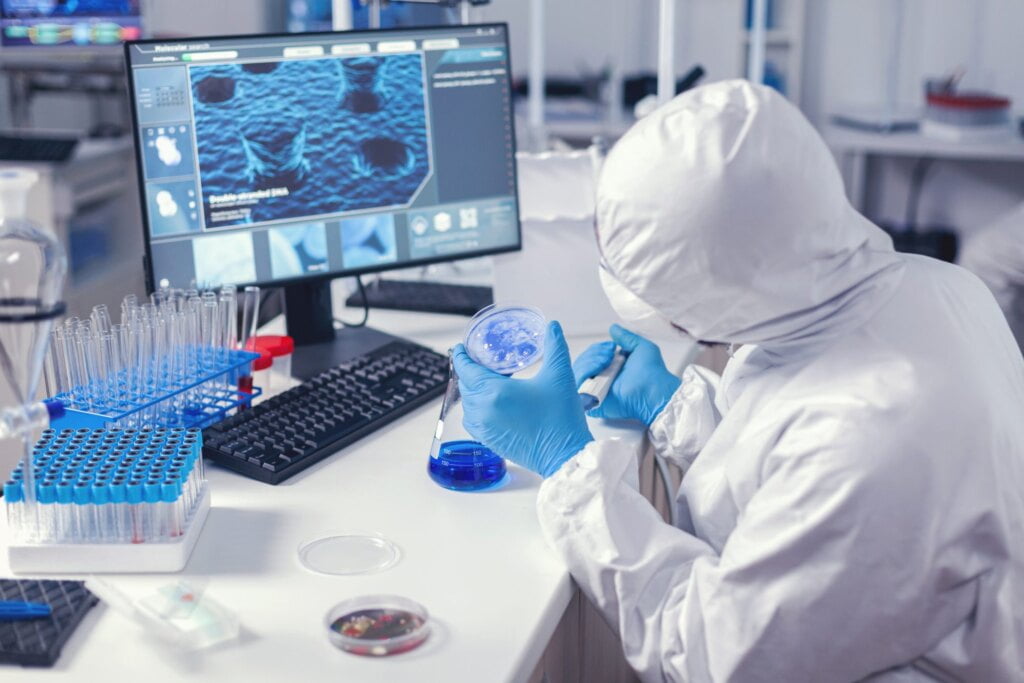 Regenerative medicine is an interdisciplinary field that aims to restore or replace damaged or diseased tissues, organs, or cells by stimulating the body’s natural repair mechanisms or through the use of cell-based therapies, tissue engineering, and biomaterials. This field has the potential to revolutionize the treatment of many diseases, including cancer, diabetes, cardiovascular diseases, and neurological disorders, among others.
Regenerative medicine is an interdisciplinary field that aims to restore or replace damaged or diseased tissues, organs, or cells by stimulating the body’s natural repair mechanisms or through the use of cell-based therapies, tissue engineering, and biomaterials. This field has the potential to revolutionize the treatment of many diseases, including cancer, diabetes, cardiovascular diseases, and neurological disorders, among others.
The basic principle of regenerative medicine is to replace or regenerate lost or damaged tissues or organs using a patient’s own cells or tissues. This approach offers several advantages over conventional therapies, including a reduced risk of rejection, decreased reliance on immunosuppressive drugs, and the potential for more effective and long-lasting treatments.
One of the most promising areas of regenerative medicine is stem cell therapy. Stem cells are undifferentiated cells that can develop into any type of cell in the body. These cells can be isolated from various sources, including bone marrow, adipose tissue, and umbilical cord blood. Once isolated, these cells can be expanded in culture and then differentiated into the specific cell types needed for tissue repair or regeneration.
Another important aspect of regenerative medicine is tissue engineering. This involves the use of biomaterials, such as scaffolds or matrices, to create a three-dimensional structure that can support the growth and development of new tissue. These scaffolds can be made from a variety of materials, including polymers, ceramics, and metals, and can be designed to mimic the natural structure and function of the target tissue.
Regenerative medicine also encompasses gene therapy, which involves the use of genetic material to treat or prevent disease. This approach involves the insertion of a healthy copy of a defective gene or the suppression of a faulty gene to prevent the expression of disease-causing proteins.
Several regenerative medicine therapies have already been approved for clinical use, including skin grafts, bone marrow transplants, and cartilage repair. These treatments have shown great promise in the treatment of a range of diseases and injuries, including burns, bone fractures, and joint degeneration.
Despite the potential of regenerative medicine, there are still several challenges that need to be overcome before these therapies can be widely adopted. One major challenge is the development of reliable and scalable manufacturing processes for cell-based therapies and tissue-engineered products. Another challenge is the need to develop effective methods for delivering these therapies to the site of injury or disease.
There are also ethical considerations that need to be addressed, particularly with regards to the use of embryonic stem cells. While embryonic stem cells offer the potential for unlimited cell numbers and differentiation potential, their use is controversial due to the destruction of embryos required for their isolation.
In conclusion, regenerative medicine represents a promising approach to the treatment of a wide range of diseases and injuries. While there are still many challenges to be overcome, this field has the potential to revolutionize the way we treat and manage disease, offering new hope for patients who are currently facing limited treatment options.
